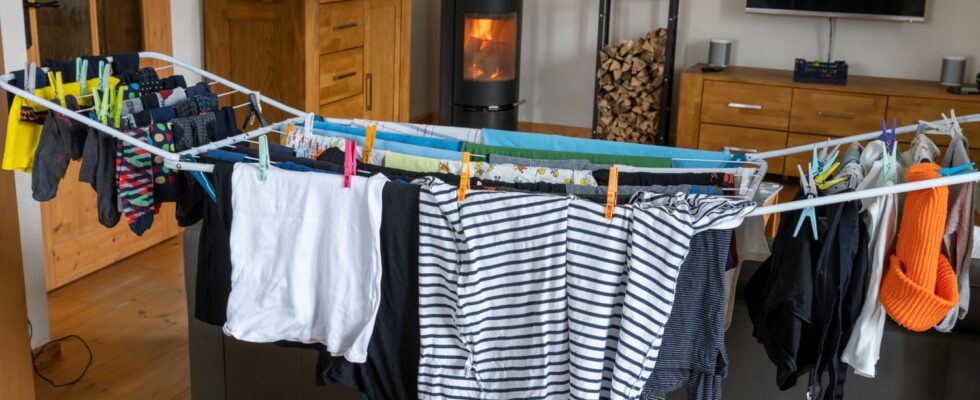This common practice to dry laundry faster in winter is actually a mistake. this can cause many problems.
In autumn and winter, there is no question of drying laundry outside. The best solution: spread it inside. But with the cold and humidity, it can take several days to dry. Many people then resort to numerous tricks to dry their laundry faster. Among them, the use of a dryer, a dehumidifier, or even a radiator. Be careful, some experts warn about this last practice for several reasons.
Drying your laundry on radiators is indeed common in winter, but this method hides disadvantages which go well beyond the impact on the energy bill. Indeed, drying your laundry on a radiator has consequences for health, clothing, radiators, and housing.
The first consequence is of course energy overconsumption. Placing damp clothes on a radiator reduces its effectiveness. In fact, linen acts as a barrier, limiting the diffusion of heat in the room. This causes the radiator to operate more intensively to maintain the desired temperature, thereby increasing energy consumption and, consequently, the electricity or gas bill.
In addition, the radiators could be damaged. Moisture from clothing can seep into the metal, promoting corrosion and rust. Over time, this can weaken your radiator and shorten its lifespan. In the case of electric heaters, humidity can cause breakdowns and even short circuits.

Drying clothes on a radiator can also cause unpleasant odors. Stagnant heat is not ideal for even, rapid drying; it can lead to residual moisture in the fibers, especially in thick textiles, thus promoting the development of bad odors and bacteria. In addition, exposing fabrics to intense heat can alter their quality: the fibers degrade more quickly and some garments may even become deformed, fade or stain.
Finally, the biggest risk is that of a fire. Clothing left on or too close to hot radiators can catch fire. If you leave your home unattended or forget to remove your clothes, this can be particularly worrying.
This may seem like an easy solution, but you should really try to avoid drying your clothes on radiators if you can. Here are some tips for better drying your laundry indoors when it’s cold. Place your drying rack in a well-ventilated room, ideally near an indirect heat source. A dehumidifier can also help absorb moisture from the surrounding air and speed up drying without overloading the atmosphere with water vapor. Also remember to ventilate the room to eliminate excess humidity and maintain a reasonable humidity level in your home.
